The Ghost Creek Railway and other public art in Whitehorse
The past week, I’ve been exploring the world of public art in Whitehorse. I’ve put a lot of miles on by car and on foot, and have been quite amazed at the amount of art to be enjoyed for free around the city.
The main thing that I’ve accomplished so far has been posting a record of all of the Murals in Whitehorse – 53 of them. The one seen below, painted by several artists, is outside the headquarters of the Royal Canadian Mounted Police. It’s a collage of historical scenes that the Mounties were part of.
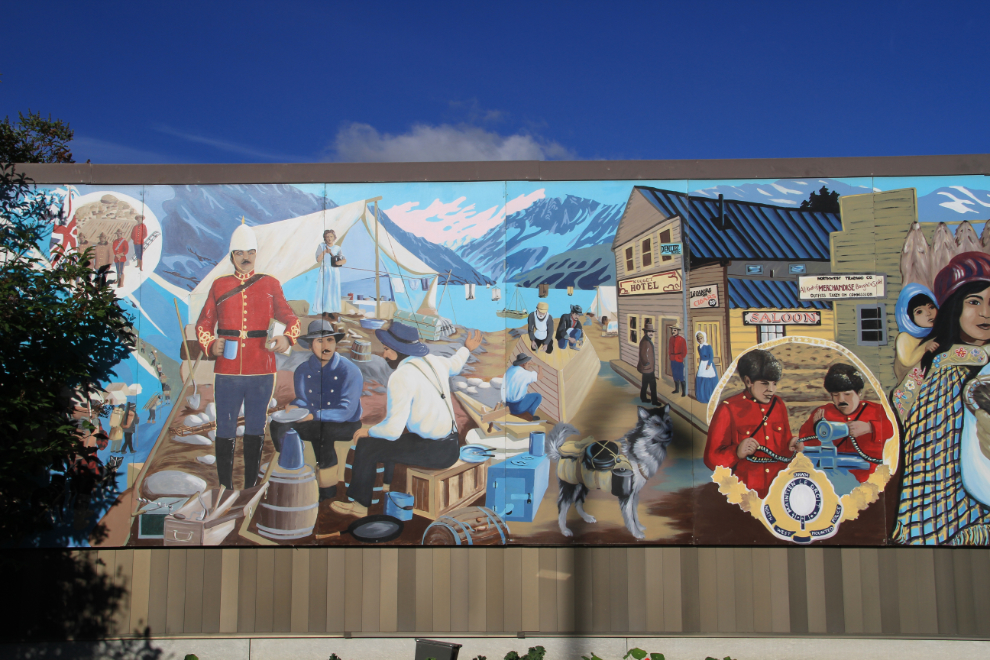
Next on the to-do list is a similar record of all the other public art – statues, busts, paintings, stained glass, and so on. The Whitehorse Horse, mounted at the top of 2 Mile Hill at the Public Safety Building, quickly became the most well-known such piece, and may well be the the main advocate for keeping the City’s “1% for Art” program intact. The program is currently under attack – I’ll tell you more about that in the not-too-distant future.
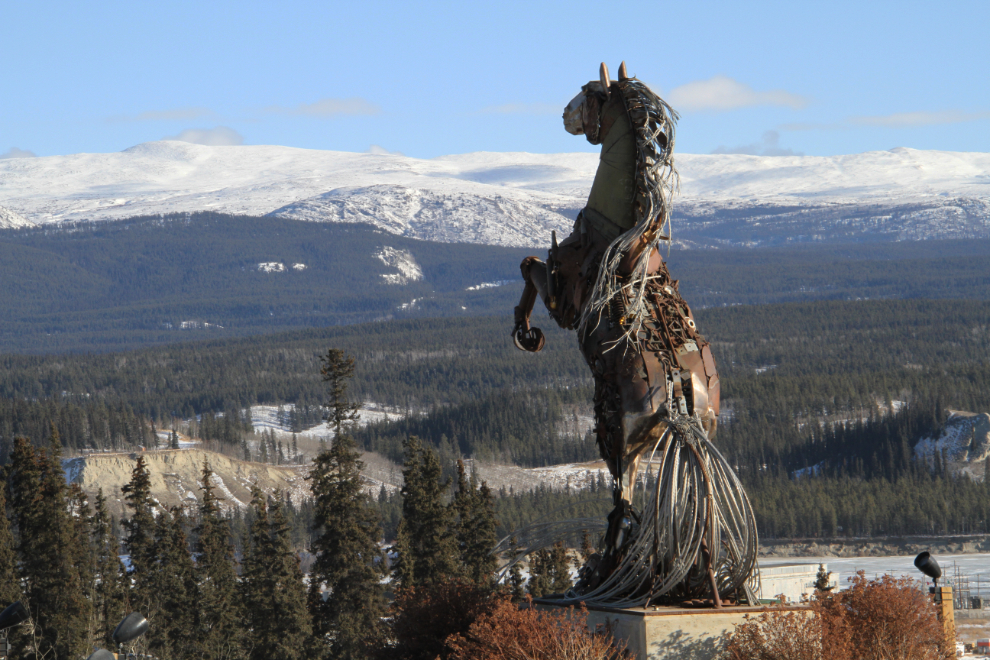
The Yukon Permanent Art Collection holds almost 400 works in every imaginable media, and various pieces rotate around the territory’s government buildings. I often go to the main legislative buildings to see what’s currently on display. I’d like to give you a look at one piece that really caught my fancy this week.
“Ghost Creek Railway” is a large acrylic on ceramic sculpture created in 1999 by Jerry Kortello. It’s mounted behind plexiglass so getting good photos is a bit of a challenge, but it’s a marvellous, whimsical piece.
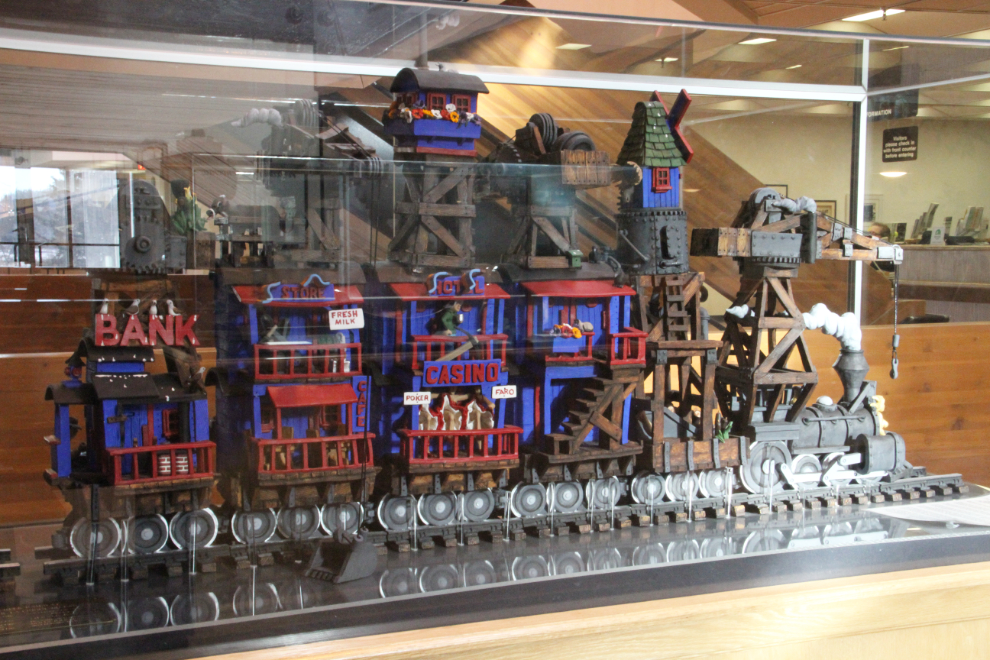
Part of the fun of the piece is the story that goes with it:
Ghost Creek Railway
“If Mohammed wouldn’t go to the mountain, then the mountain must come to Mohammed.”
This line in a cheap novel inspired Panko Kornu. Panko was working as a summer student with a team of senior engineers doing a feasibility study which would one day lead to the construction of dredge #4. Water is essential for separating gold from gravel along the creeks of the Klondike. There was an intricate system of sluices and trestles which used virtually all the water flowing downstream. Claims further away from the stream beds and those on higher ground were not being worked because there was no available water. Panko’s plan was to bring the water to the claim on a train.
This is a model of the railway that Panko built. Water literally circulated around the train in a series of troughs. It was elevated to a storage tank by a windmill and then flowed over a system of sluice boxes. The waste gravel was discharged at the rear of the train. The water was redirected to the front by another series of water troughs on the other side of the train. There, settling ponds helped maintain the clarity of the water. In the last pond, fish were planted and thrived, attributing to the effectiveness of the water purification system. Then the water was pumped up to the storage tank and recycled.
The train consisted of four elevated derricks with draglines. The first derrick prepared the roadbed on which the train traveled. The side derricks fed the sluice boxes. The rear derrick spread out the waste rock accumulated from the sluice boxes. Periodically, the four derricks acted together and Dassed sections of track from the rear of the train to the front. The train ran on the same half mile section of track which was repeatedly leapfrogged ahead. Speed was not of the essence.
The train had two highly different sides — the industrial sluice box side and the quiet settling pond side which included a store, restaurant, hotel and casino. Not only did Panko plan to recycle the water, he planned to recycle the miners’ share of the gold. Poker and games of chance were offered in the casino, other games in the hotel and gourmet meals were served in the restaurant. The chef came from France.
Panko entered into a business agreement with a large number of placer miners. He would provide the water in return for half the gold. They would provide the gold bearing gravel from their claims. He would provide the machinery – the draglines and sluices. They would provide the labour. It was a win/win situation for both parties. Unfortunately, both parties had only limited capital.
From this point on, there is a great diversity of opinion on what really happened. Some say Panko bought the train fair and square. Omers say there was a bridge derailment wat of Edmonton. When all the snow had settled, there was a giant hole in the ice, a missing train and no survivors to tell the tale. All personnel were presumed drowned in the icy depths. Only one boxcar was ever found. Funny thing was that a half mile of track was missing.
Panko and an entire crew of experienced railway men headed north, spanning rivers and building roadbed as they went. If you drive along the highway outside Dease Lake, people say you can see the remains of the roadbed.
Something happened in the third winter. Stories are contradictory. Actual facts are hard to determine. With the slow progress, disillusionment settled in. Heated arguments ensued about where to cross the Pelly River. Some people died – whether from sickness or from deadly force, no one knows. Among the four crosses at the train site, there is one with the name Panko Kornu on it. It is in the exact path of the train, which would seem odd for the man whose dream it was. Others say those who didn’t like Panko planted him there. Another rumour had it that Panko was seen running a small art gallery in the south of France.
_____________
The fun side of the train really is a lot of fun to explore, to see the various ways that Panko Kornu had devised to separate the miners from their share of the gold.
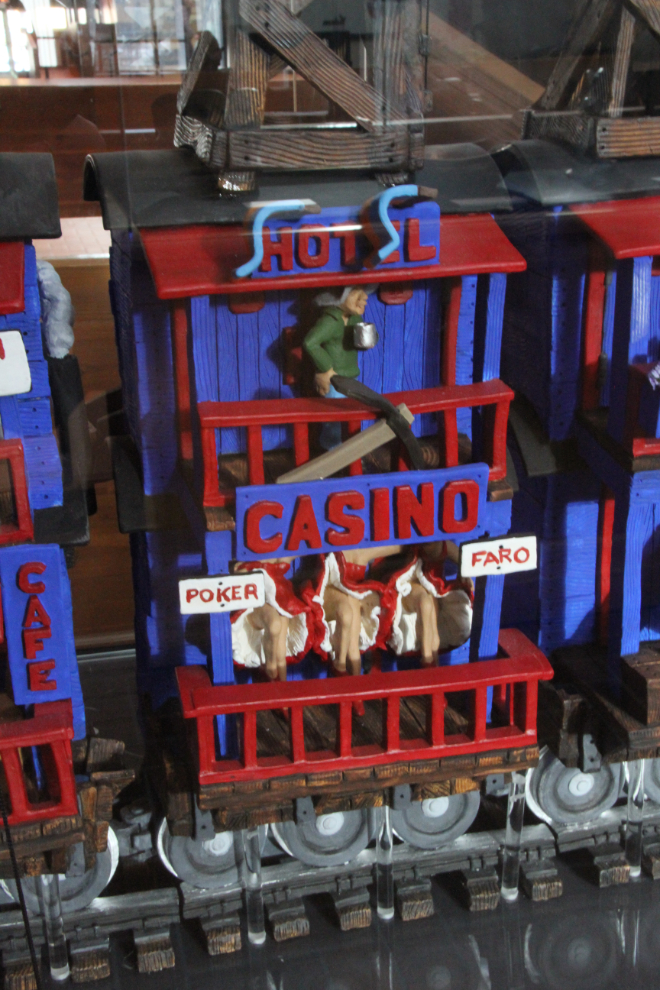
A woman lazing in a tub is a good example of the sort of detail in the train.
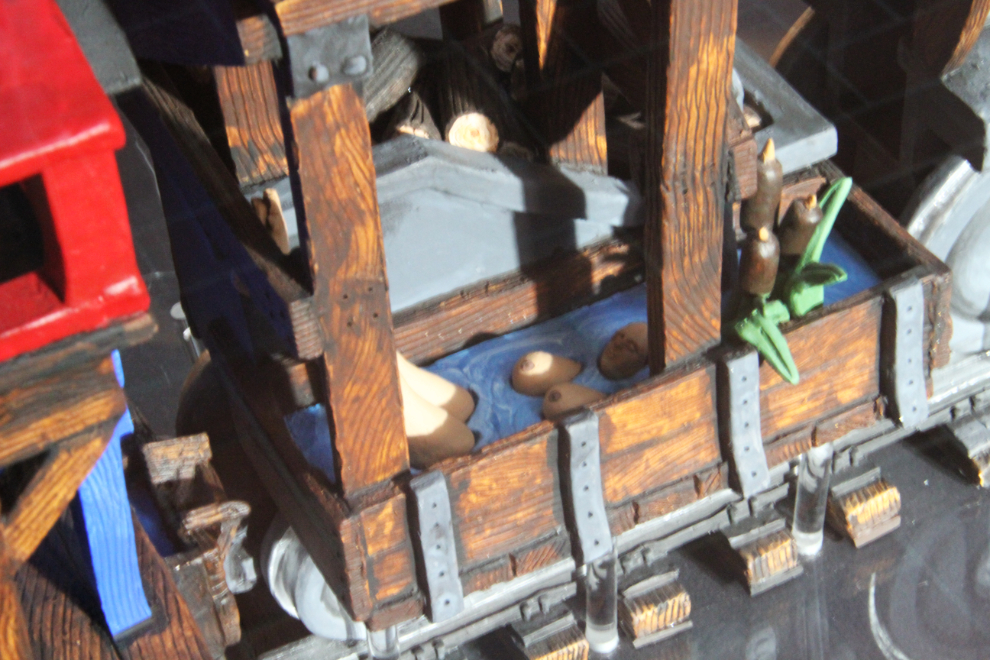
I think that pieces from the Yukon Permanent Art Collection will be appearing here fairly regularly now.
With sunshine boosting the energy levels of most Yukoners in a major way now, even with temperatures still dropping into the -20s at night, there’s a lot going on that I want to tell you about in upcoming posts.